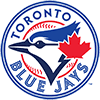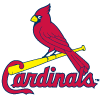This article is part of our Pitching 3D series.
Marcus Stroman (111)
Masahiro Tanaka (113)
Michael Wacha (114)
Tyson Ross (116)
Justin Verlander (120)
Steven Matz (127)
Francisco Liriano (128)
Garrett Richards (129)
The next starting pitcher is Hisashi Iwakuma, who checks in 16 slots later at No. 145 overall. Despite the gap, there are high doses of intrigue within that next set of pitchers as well, many of whom are more enticing than the players under today's microscope. This section of the pitcher pool is very deep.
As per usual, the major-league rankings are in parentheses for each category in the tables, with an asterisk (*) denoting a season in which the pitcher failed to qualify (minimum 162 IP) and ties represented by a lower-case "t." The number of qualifying pitchers for each season were as follows:
2015 – 78 pitchers
2014 –
Marcus Stroman (111)
Masahiro Tanaka (113)
Michael Wacha (114)
Tyson Ross (116)
Justin Verlander (120)
Steven Matz (127)
Francisco Liriano (128)
Garrett Richards (129)
The next starting pitcher is Hisashi Iwakuma, who checks in 16 slots later at No. 145 overall. Despite the gap, there are high doses of intrigue within that next set of pitchers as well, many of whom are more enticing than the players under today's microscope. This section of the pitcher pool is very deep.
As per usual, the major-league rankings are in parentheses for each category in the tables, with an asterisk (*) denoting a season in which the pitcher failed to qualify (minimum 162 IP) and ties represented by a lower-case "t." The number of qualifying pitchers for each season were as follows:
2015 – 78 pitchers
2014 – 88 pitchers
2013 - 81 pitchers
Marcus Stroman
The hype machine was cranked up to 11 for Stroman one year ago, but then a freak accident in spring training resulted in a torn ACL and what was thought to be a lost season. Instead, he returned in September, shut down opponents for 27.0 innings in the final month of the regular season, and was pitching meaningful innings (nearly 20 of them) for the Blue Jays in the playoffs.
| STAT | 2015 | 2014 |
| ERA | 1.67 (2*) | 3.65 (55*) |
| WHIP | 0.963 (5*) | 1.171 (28*) |
| K's | 18 (493t) | 111 (111t) |
| Wins | 4 (196t) | 11 (56t) |
It will be interesting how the Jays handle the workload of the young hurler, whose modest size and hi-octane delivery could convince the Blue Jays to apply the brakes following his abbreviated campaign. That said, this is a contending club with few high-end options on the mound, and they will be tempted to use their best pitcher for a significant chunk of innings as they seek a second consecutive playoff berth. His career strikeout rate of 20.3 percent is lower than his excellent stuff would suggest, offering glimpses of greater upside in the future, but any impact that Stroman would have in that category would require considerable growth.
Masahiro Tanaka
A questionable workload will be a theme throughout today's exploration of pitchers. Tanaka was a workhorse in Japan, but elbow woes have limited him to fewer than 25 starts in both of his first two seasons of major-league play. He has a known tear of his ulnar collateral ligament, and though it's possible that Tanaka pitches through another season, he seems like a ticking time bomb to go under the knife.
| STAT | 2015 | 2014 |
| ERA | 3.51 (32*) | 2.77 (15*) |
| WHIP | 0.994 (6*) | 1.056 (8*) |
| K's | 139 (64t) | 141 (66t) |
| Wins | 12 (35t) | 13 (37t) |
Tanaka is the best pitcher on today's list on an inning-per-inning basis, and if his workload weren't such a large question mark then he would rank with the SP2 class. He rarely walks anyone, with a career rate of just 1.5 BB/9, but big-league hitters have taken advantage of some of those strikes to hit the ball out of the yard and wreck his ERA. The right-hander is good for about a strikeout per inning (280 K in 290.1 career innings) and will shoulder the pitch count to stay in the game for a win, but the red flag of injury risk will wave above his head until he has the elbow fully repaired.
Michael Wacha
Wacha pitched a career-high 181.1 innings last season, staying on the mound for 30 starts after falling below 20 turns in each of the previous two seasons. He has maintained a low ERA throughout his brief career and he racked up the wins last season, but there isn't one category that Wacha takes particular aim.
| STAT | 2015 | 2014 | 2013 |
| ERA | 3.38 (25) | 3.20 (28*) | 2.78 (9*) |
| WHIP | 1.213 (34) | 1.196 (34*) | 1.098 (15*) |
| K's | 153 (50t) | 94 (136t) | 65 (210t) |
| Wins | 17 (9t) | 5 (163t) | 4 (202t) |
Wacha was basically a fastball-changeup guy when he came up to the majors but has since incorporated two different breaking pitches, including a 90-mph cutter and a mid-70s curve, but neither pitch has helped to boost a pedestrian strikeout rate that has hovered around 7.5 K/9 in his career. In fact, 85 percent of his strikeouts last season ended on the fastball or the change. He generally keeps the ball in the park and runs off the board, but if you're looking for a workhorse starter or one who will help to dent the strikeout category, then look elsewhere, because Wacha is neither of those things.
Tyson Ross
Ross got a bit walk-happy last season, leading the major leagues with 84 free passes, but he allowed fewer than 8.0 H/9 for the third consecutive season and surrendered just nine home runs in 196.0 innings. The strikeouts were particularly impressive, establishing new career highs with 9.7 K/9 and 212 total K's.
| STAT | 2015 | 2014 | 2013 |
| ERA | 3.26 (20) | 2.81 (16) | 3.17 (23*) |
| WHIP | 1.306 (53) | 1.211 (36) | 1.152 (22*) |
| K's | 212 (13) | 195 (15) | 119 (89t) |
| Wins | 10 (64t) | 13 (37t) | 3 (250t) |
He throws so many sliders that his injury risk will always be under the spotlight, including a 42 percent usage rate for the slider last season. But when it comes to the four stats that matter for fantasy starting pitchers, Ross has fared better than anyone else on this list, and he's the only starter who has qualified in the top 20 in at least four categories over the past two seasons. The walks are the only blemish, and he can easily cover for the problem so long as he continues to maintain such low rates of hits and homers allowed.
Justin Verlander
Verlander fell from the heights of being a perennial Cy Young candidate to the ground floor of run-inducing machines in the span of just two years. Fantasy managers thought that he was cooked after 2014, particularly when his start to 2015 was delayed and he carried a 6.62 ERA as late as July 19. He was a mechanical mess, was directing his energy off-line from the target on every pitch and appeared to be lost on the mound.
| STAT | 2015 | 2014 | 2013 |
| ERA | 3.38 (26*) | 4.54 (81) | 3.46 (38) |
| WHIP | 1.088 (15*) | 1.398 (81) | 1.315 (58) |
| K's | 113 (93t) | 159 (44t) | 217 (7) |
| Wins | 5 (157t) | 15 (15t) | 13 (32t) |
Verlander rebounded with a 2.12 ERA over his final 11 starts of the season, a performance that rose some eyebrows. His mechanics were fixed in the sense that had lined up his delivery, allowing for his plus pitch command to shine through. However, the hi-speed velocity and sharp-dropping curveball that marked his previous bouts of dominance were still missing, putting the onus on Verlander to make more of lesser stuff as he ages past his physical prime. He only pitched 133.1 innings in 2015 after eight straight seasons of at least 200, and he's a good bet to get back on that track this season.
Steven Matz
The unknown is a lure for fantasy players, and Matz is bait. The combination of his thin track record and the stable of young horses that have been amassed by the Mets have conspired to inflate his 2016 value, putting Matz on the radar for a No. 3 starter in a 12-man fantasy league despite his bringing up the rear in his own big-league rotation.
| STAT | 2015 |
| ERA | 2.27 (4*) |
| WHIP | 1.234 (36*) |
| K's | 34 (370t) |
| Wins | 4 (196t) |
The innings count is a major issue for the young southpaw. Not only did Matz pitch just 35.2 innings of big-league ball last year, a sample so small as to render his numbers moot, but he has compiled a modest 140 innings in both of the last two seasons when combining his time in the majors and minors. He will likely be limited to fewer than 175 frames this season even if he avoids injury, putting a serious cap on his maximum value to a fantasy team this season. His strikeout rate has been solid yet unspectacular in the minors, so he will likely need to post outstanding ratios in order to carry the weight of a third starter.
Francisco Liriano
Liriano carved a reputation of volatility early in his career, with equal shares of immense upside and frightening downside. He has settled into being a relatively trustworthy pitcher in his three years with the Pirates. Liriano continues to walk more than his fair share of hitters, but the 9.1 percent walk rate of 2015 was his lowest since 2010.
| STAT | 2015 | 2014 | 2013 |
| ERA | 3.38 (26) | 3.38 (33) | 3.02 (15*) |
| WHIP | 1.205 (31) | 1.300 (65) | 1.224 (43*) |
| K's | 205 (15t) | 175 (30t) | 163 (39t) |
| Wins | 12 (35t) | 7 (113t) | 16 (7t) |
He offsets a volatile WHIP with a solid strikeout count, and Liriano fell one inning shy (in 2013) of being the only pitcher under today's microscope to qualify for the ERA title in all three seasons. He tends to go through blatant streaks and slumps, so Liriano is a pitcher that you can ride in the rotation for weeks at a time, only to bench him when the warning bell chimes. Liriano stacks the deck against himself when it comes to hitting targets, changing his starting position on the rubber based on the handedness of the opposing hitter to add a wrinkle of complication in his attempt to find a repeatable delivery.
Garrett Richards
Richards did the unthinkable, converting his high-90s fastball from the 2013 bullpen into an even harder fastball the following season while pitching in the rotation. He displayed the opposite pattern from conventional wisdom, adding velo despite pitching longer stints, and his development continued in 2015.
| STAT | 2015 | 2014 | 2013 |
| ERA | 3.65 (38) | 2.61 (10) | 4.16 (63*) |
| WHIP | 1.240 (38) | 1.038 (6) | 1.345 (64*) |
| K's | 176 (25t) | 164 (38t) | 101 (116t) |
| Wins | 15 (12t) | 13 (37t) | 7 (112t) |
The fastball velo from 2015 was not quite as impressive as it was in 2014, but he was still throwing harder than his bullpen days and doing so on a reconstructed knee after a gruesome injury while playing defense. Richards actually led the majors in wild pitches – and did so for the second consecutive season – but he trimmed five wild ones off his count despite pitching nearly 40 additional innings. He has heavy spine-tilt late in the delivery, which is a mechanical strike against him, but Richards has dominant upside and the stuff to backup a potential breakout.
Here is how I rank these eight players for the 2016 fantasy season:
1. Tyson Ross
2. Francisco Liriano
3. Garrett Richards
4. Marcus Stroman
5. Masahiro Tanaka
6. Michael Wacha
7. Justin Verlander
8. Steven Matz
The first three pitchers are the most trustworthy in terms of expected workload as well as having an impact on fantasy categories across the board. Ross and Liriano have both earned a long leash of trust over the past couple of seasons, while Richards pitched the most 2015 innings and has the most upside of the bunch. I think that Stroman has incredible upside, but the workload concerns combined with the low strikeout rates mean that it would take a big jump of development for him to justify a higher ranking. Tanaka is the best pitcher on this list when healthy, but his injury status casts a dark cloud over his projected contributions for this season.
Wacha carries name value and a strong supporting cast, and though the evolution of his arsenal has been impressive, the lack of effectiveness for the breaking stuff is holding down his potential stat-line. I think that Verlander is much better than what was on display in 2014, but I don't think that the Cy Young version is coming back, at least not in the near term. Matz brings up the final spot, and in a larger ranking with more players he would be bumped several spots further down the list. I'm just not convinced that he'll have the workload or the performance to sit alongside the other pitchers in his ADP zone.
A manager's preference can depend on a few different factors when looking for his ideal SP3, not the least of which is the shape of the first two pitchers in the rotation. If I've gone with ratios at the expense of counting stats for the first two arms (say Jose Fernandez and Chris Archer), then pitchers such as Liriano and Ross might be more desirable in order to lock down some innings. If I went horses early (say Madison Bumgarner and Felix Hernandez), then the low-innings options such as Tanaka and Stroman become more attractive. It all comes down to each manager's risk tolerance and the shape of his/her pitching staff.









